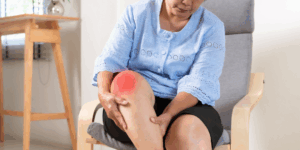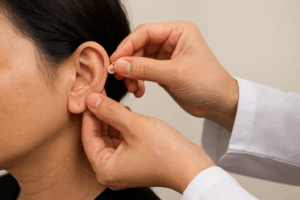Endometriosis is a common gynecological condition that affects many women worldwide. It is characterized by the abnormal growth of endometrial tissue outside the uterus, usually in the pelvic area. This condition can cause severe pain, heavy menstrual bleeding, and fertility problems. While there is no cure for endometriosis, there are several natural treatments that can help manage its symptoms and improve quality of life. In this article, we will explore some effective natural treatments for endometriosis and how they can provide relief.

Understanding Endometriosis
Before delving into the natural treatments, it is important to have a basic understanding of endometriosis. Endometriosis occurs when the tissue that usually lines the inside of the uterus, known as the endometrium, starts growing outside the uterus. This can lead to the formation of lesions, adhesions, and scar tissue. The exact cause of endometriosis is not yet fully understood, but hormonal imbalances, genetic factors, and immune system dysfunction are believed to play a role.
What is Endometriosis?
Endometriosis is a chronic condition that affects women during their reproductive years. It can cause a wide range of symptoms, including pelvic pain, painful periods (dysmenorrhea), heavy menstrual bleeding (menorrhagia), pain during intercourse (dyspareunia), and infertility. The severity of symptoms can vary from woman to woman, with some experiencing mild discomfort while others suffer from debilitating pain.
Symptoms and Diagnosis of Endometriosis
Diagnosing endometriosis can be challenging as its symptoms can be similar to other conditions. A thorough medical history review, physical examination, and imaging tests like ultrasound or MRI may be necessary to confirm the presence of endometriosis. In some cases, a laparoscopy, a surgical procedure, may be performed to visualize the pelvic organs and confirm the diagnosis.
It is important for women to be aware of the symptoms associated with endometriosis. Pelvic pain is one of the most common symptoms reported by women with endometriosis. This pain can range from mild to severe and may occur before, during, or after menstruation. Some women also experience chronic pelvic pain that is not directly related to their menstrual cycle.
In addition to pelvic pain, women with endometriosis may also experience painful periods, known as dysmenorrhea. This can include severe cramping, lower back pain, and abdominal discomfort. The pain can be so intense that it interferes with daily activities and may require the use of pain medication.
Another symptom of endometriosis is heavy menstrual bleeding, known as menorrhagia. Women with endometriosis may experience excessively heavy periods that require frequent changes of sanitary products. This can lead to feelings of fatigue and weakness, as well as anemia in some cases.
Pain during intercourse, or dyspareunia, is another symptom that women with endometriosis may experience. The presence of endometrial tissue outside the uterus can cause pain and discomfort during sexual intercourse. This can have a significant impact on a woman’s quality of life and may lead to a decrease in sexual activity.
Infertility is also a common concern for women with endometriosis. The presence of endometrial tissue outside the uterus can affect the function of the reproductive organs, making it more difficult for a woman to conceive. It is estimated that up to 50% of women with infertility have endometriosis.
Diagnosing endometriosis can be challenging due to the similarity of its symptoms with other conditions. A thorough medical history review is important to understand the pattern and severity of symptoms. A physical examination may also be conducted to check for any abnormalities in the pelvic area. Imaging tests, such as ultrasound or MRI, can provide further information about the presence of endometrial tissue outside the uterus.
In some cases, a laparoscopy may be necessary to confirm the diagnosis of endometriosis. This surgical procedure involves making small incisions in the abdomen and inserting a thin, lighted tube with a camera into the pelvic area. This allows the doctor to visualize the pelvic organs and identify any endometrial tissue or adhesions.
Overall, understanding the symptoms and diagnosis of endometriosis is crucial for women who suspect they may have this condition. Seeking medical attention and discussing symptoms with a healthcare provider is important for proper diagnosis and management of endometriosis.
The Role of Diet in Managing Endometriosis
Diet plays a crucial role in managing the symptoms of endometriosis. Certain foods can contribute to inflammation and hormonal imbalances, exacerbating the symptoms. On the other hand, incorporating anti-inflammatory foods and avoiding trigger foods can help alleviate pain and discomfort.
Anti-Inflammatory Foods
Incorporating anti-inflammatory foods in the diet can help reduce inflammation and provide relief from endometriosis symptoms. Foods rich in omega-3 fatty acids, such as fatty fish (salmon, mackerel), flaxseeds, and chia seeds, have been found to have anti-inflammatory properties. Including fruits and vegetables like berries, leafy greens, and cruciferous vegetables also helps combat inflammation.
Foods to Avoid
Avoiding certain foods can also help manage endometriosis symptoms. These include processed foods, refined sugars, caffeine, alcohol, and red meat. These foods can potentially worsen inflammation and hormonal imbalances, leading to increased pain and discomfort.
Herbal Remedies for Endometriosis
Herbal remedies have been used for centuries to manage various health conditions, including endometriosis. They can help reduce inflammation, balance hormones, and provide pain relief.
Traditional Chinese Medicine
In traditional Chinese medicine, herbal remedies are commonly used to alleviate endometriosis symptoms. Herbs like Chinese peony, licorice root, dong quai, and cinnamon bark are believed to have anti-inflammatory and hormone-balancing properties. However, it is essential to consult an experienced Chinese medicine practitioner before starting any herbal treatment.
Western Herbal Medicine
Western herbal medicine also offers several herbs that can help manage endometriosis symptoms. Herbs like turmeric, ginger, chamomile, and cramp bark have anti-inflammatory and pain-relieving properties. These herbs can be consumed as teas, tinctures, or in supplement form. Consulting a qualified herbalist is advisable to determine the appropriate dosage and to ensure safe usage.
Lifestyle Changes to Alleviate Endometriosis Symptoms
Aside from diet and herbal remedies, certain lifestyle changes can significantly improve the symptoms of endometriosis.
Exercise and Endometriosis
Regular exercise has been found to reduce inflammation, improve circulation, and alleviate pain associated with endometriosis. Engaging in low-impact exercises like yoga, swimming, and walking can be beneficial. However, it is important to listen to your body and avoid overexertion, as intense physical activity may worsen symptoms in some cases.
Stress Management Techniques
Stress can exacerbate endometriosis symptoms, so practicing stress management techniques is crucial. Techniques such as deep breathing, meditation, mindfulness, and engaging in activities that promote relaxation can help reduce stress levels. Additionally, seeking support from therapists or joining support groups can provide a safe space to share experiences and coping mechanisms.
Complementary Therapies for Endometriosis
Complementary therapies can also be beneficial in managing endometriosis symptoms and promoting overall well-being.
Acupuncture and Endometriosis
Acupuncture, a traditional Chinese medicine practice, involves the insertion of fine needles into specific points in the body. It has been used to reduce pain and inflammation associated with endometriosis. Some studies have shown promising results in terms of pain reduction and improved fertility outcomes. However, it is important to consult a licensed acupuncturist for treatment.
Homeopathy and Endometriosis
Homeopathy is another complementary therapy that can help manage endometriosis symptoms. Specific homeopathic remedies, tailored to each individual’s symptoms and constitution, can be prescribed to provide relief. Consulting a qualified homeopath is essential to determine the right remedies and ensure safe usage.
In conclusion, while endometriosis is a chronic condition without a known cure, natural treatments can play a significant role in managing its symptoms and improving quality of life. Understanding endometriosis, making dietary changes, exploring herbal remedies, adapting lifestyle choices, and considering complementary therapies can provide relief and empower women to take control of their health and well-being.











